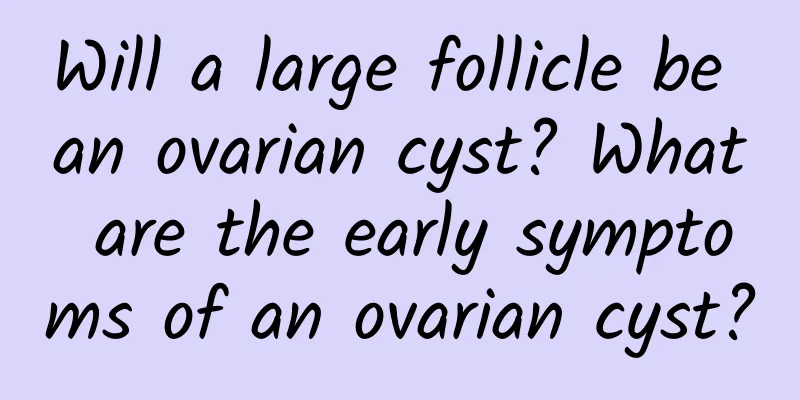Young girl suffers from ovarian cyst

|
Xiaowei, 21 years old, is a sophomore. She went to the hospital for a checkup because of excessive vaginal discharge with a peculiar smell. B-ultrasound revealed a mixed mass of 4.9cm×4.5cm×3.0cm in her left adnexa. She was initially diagnosed with ovarian cysts and was recommended to receive conservative treatment with traditional Chinese medicine. Through questioning, it was learned that Xiaowei had symptoms of dry stools, usually once every two days, yellow urine, and good sleep. Visual examination showed that her tongue was red, with a yellow and greasy coating, and her pulse was rapid. She was diagnosed with ovarian cysts, and the syndrome was blood and water intertwined, with damp heat beating downward. She was given Danggui Shaoyao San, one dose per day, decocted in water, and returned for a follow-up visit after taking it for 10 consecutive days. 10 days later, the B-ultrasound showed that Xiaowei had a mixed mass in the left adnexa area with a size of 1.9cm×1.7cm×1.3cm. The symptoms of excessive leucorrhea and odor were significantly improved. The bowel movements were normal. The tongue and pulse were the same as before. Therefore, loofah, dandruff, roasted astragalus, cat's claw, and fistula were added to Danggui Shaoyao San. One dose was taken daily, decocted in water, and the patient was re-examined after 10 days. 10 days later, during the second re-examination, the B-ultrasound showed that the left adnexa mass had disappeared, the leucorrhea was less with a slight fishy smell, and the bowel movements were normal. Visual examination showed that the tongue was light red and the tongue coating was thin and white. After 10 days of consolidation treatment according to the re-examination prescription, Xiaowei's condition was cured. Ovarian cysts are common gynecological diseases that can occur in young girls without sexual experience. They are often related to the lack of awareness of menstrual hygiene and health care, which allows dampness and turbidity to enter the body and affect blood circulation. Danggui Shaoyao San, which has the effect of promoting diuresis and removing dampness, is often used for treatment. In the formula, angelica, white peony root, and Chuanxiong promote blood circulation, while Atractylodes macrocephala, Poria cocos, and Alisma orientalis promote diuresis. They complement each other and can effectively reverse the pathological state that blood is not harmonious when blood is not harmonious and water is not harmonious when water is not harmonious. In clinical application, it can also be added or subtracted according to the symptoms, and generally a good therapeutic effect can be achieved. |
<<: Two Medicinal Diets Suitable for Patients with Ovarian Cysts
>>: Two misunderstandings about ovarian cysts
Recommend
What are the symptoms of cervical hypertrophy when the condition is more serious?
The symptoms of cervical hypertrophy are often co...
How to treat an invasive mole
How is an invasive mole treated? 1. Invasive mole...
How to prevent hydatidiform mole from becoming cancerous
How to prevent hydatidiform mole from becoming ca...
Reduce body fatigue to zero! Office workers should do 2-step desk exercise
When you feel tired, the most effective way is to...
Correctly understand the harm of hyperprolactinemia
Diseases will cause some harm. What troubles wome...
The main manifestations of several early symptoms of cervical erosion
Clinically, the early symptoms of cervical erosio...
Experts explain how women can prevent dysmenorrhea in winter?
Preventing dysmenorrhea is a must for women, espe...
How to check for vaginal itching in women
Many women do not pay attention to personal hygie...
What medicine can prevent the growth of uterine fibroids? What medicine can prevent the growth of uterine fibroids?
What medicine can prevent the growth of uterine f...
Two reasons for female vulvar leukoplakia
The incidence of vulvar leukoplakia is very high,...
What should I do if my menstruation is not clean after medical abortion?
What should I do if my menstruation is not clean ...
Two common dietary treatments for chronic pelvic inflammatory disease
With the increase in the incidence of chronic pel...
What are the methods for checking cervical erosion in women? Introduction to 5 methods for checking cervical erosion
I believe everyone knows the importance of the ce...
Acute and chronic cervicitis will show up in leucorrhea
Acute and chronic cervicitis will show up in vagi...
Can you still get pregnant after a threatened miscarriage?
It is possible to get pregnant again after a thre...









